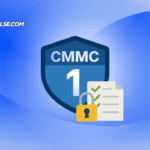Translating Japanese text from pictures poses numerous challenges due to the special characteristics of the Japanese writing system and the complexities concerned with optical character recognition (OCR) technology. Here are some key challenges:
-
Kanji Characters
Japanese writing combines kanji (ideographic characters), hiragana, and katakana (syllabic characters). Kanji characters are complicated and can have multiple readings, making their accurate recognition and translation challenging.
-
Character Recognition
Optical character recognition technology, which converts pictures of textual content into editable text, faces difficulties with handwritten or stylized fonts, low-resolution images, and complicated layouts. Japanese text can range greatly in font styles, handwriting styles, and calligraphy, making correct character recognition more challenging.
-
Contextual Understanding
Japanese often rely closely on context to convey meaning, and many words have multiple interpretations. Accurately translating Japanese text from photographs without the surrounding context can be difficult, leading to possible ambiguities and inaccuracies in the translation.
-
Line Ordering
Japanese text is generally written vertically from right to left in columns. Maintaining the right line order and path during the OCR system is integral to keeping the intended meaning.
-
Text Alignment
Japanese text can be aligned in several ways, such as vertical, horizontal, or combined orientations. Identifying the right alignment and keeping it during translation is critical to ensure the accuracy and readability of the translated text.
-
Cultural and Linguistic Nuances
Japanese language and culture comprise numerous idioms, honorifics, and expressions that may also now not have direct equivalents in other languages. Translating these nuances requires a deep understanding of the language and cultural context.
Availability of Advanced Tools and Methods for Image Translation
-
Optical Character Recognition (OCR) Software
OCR, or Optical Character Recognition, is a technology that converts printed or handwritten textual content, from photos, into machine-readable text. In the context of translating Japanese text from images, OCR is vital for extracting Japanese characters and changing them into editable text.
-
Online Translation Services
Online translation offerings play a significant function in image translation from Japanese by supplying speedy and available solutions. These offerings regularly incorporate OCR technology to extract text from images, permitting users to add Japanese photo files and acquire translations in their favoured language. However, the accuracy and quality of translations may also vary, and human post-editing is sometimes essential for extra particular results.
-
Mobile Apps for Image Translation
Mobile apps for image translation from Japanese provide convenient options for on-the-go translation needs. With the potential to capture and analyze images at once from a smartphone, these apps supply quick and reachable translations in real time. Users can effortlessly translate Japanese text from signs, menus, or any visible content while travelling or in daily life.
-
Neural Machine Translation (NMT) Tools
NMT, or Neural Machine Translation, is a translation method that uses artificial neural networks to generate translations. NMT has proven effective in Japanese translation by capturing the language’s complicated structures and contextual nuances. It has multiplied the fluency and accuracy of translations, making it an effective tool for Japanese translation tasks.
-
Augmented Reality (AR) Translation
A rising trend in picture translation for Japanese text is the use of augmented reality (AR) technology. AR translation purposes immediately overlay translated text onto the authentic real-time image using smartphone cameras or AR glasses. This technology lets customers see translated Japanese text seamlessly built into the image, making it simpler to understand and navigate Japanese content. AR translation enhances the personal experience by offering immediate and contextual translations, especially in situations like travel, analyzing signs, or exploring Japanese cultural content.
-
Human Translation Services
Human translation is necessary to ensure correct and nuanced outcomes when translating Japanese. While computer translation systems have made enormous advancements, they still face challenges in capturing the complexities and subtleties of the Japanese language.
Japanese is a language wealthy in cultural references, honorifics, idiomatic expressions, and context-dependent meanings. These nuances require a deep perception of human translators’ language and culture. Human translators can interpret the intent behind the text and make knowledgeable selections on word choice, tone, and cultural appropriateness.
Hence, Japanese text can be ambiguous, relying closely on context for correct interpretation. Human translators can draw upon their knowledge and experience to precisely understand the intended meaning and furnish the most suitable translation. Additionally, human translators can manage domain-specific terminology, technical jargon, and industry-specific nuances, which can also be difficult for machine translation structures to translate precisely besides specialized training data.
Human translation additionally ensures first-rate control and permits post-editing and revision to refine the translation further. It affords a layer of expertise, cultural sensitivity, and linguistic accuracy that helps bridge the gap between languages and cultures, ensuring the final translation is highly satisfying and meets the target audience’s particular needs.












